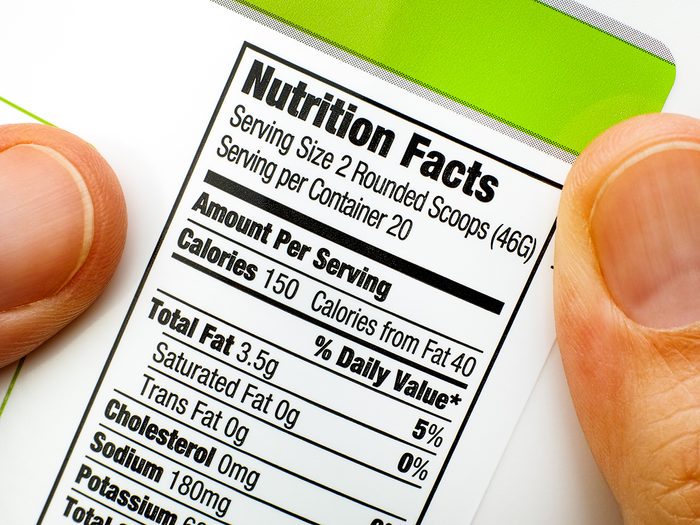
How to Read Nutrition Labels in Canada, Line by Line
Serving Size
When it comes to learning how to read nutrition labels, the first place to look is the serving size. Located directly under the “Nutrition Facts” title at the top of the list, it displays the amount of fat, calories and nutrients you’re consuming. Compare the specific amount of food displayed on the label to what you’re actually eating; these portions can be quite different, so calculate accordingly.

How to Read “% Daily Value”
This figure helps you evaluate whether there is a little or a lot of a nutrient in what you are about to consume. For instance, a 10 per cent daily value (DV) of fibre means one serving of that food provides 10 per cent of the fibre you should consume in one day. According to Health Canada,the quick rule is, five per cent DV or less is a little, and 15 per cent DV or more is a lot. (So look for less than five per cent for something like sodium but over 15 per cent or something like fibre.) Daily values for carbohydrates, total fat, saturated fat and trans fat are based on a 2,000-calorie-a-day diet. Daily values for the remaining nutrients apply to most people, regardless of caloric needs.
Find out the healthy high fibre foods worth adding to your cart.
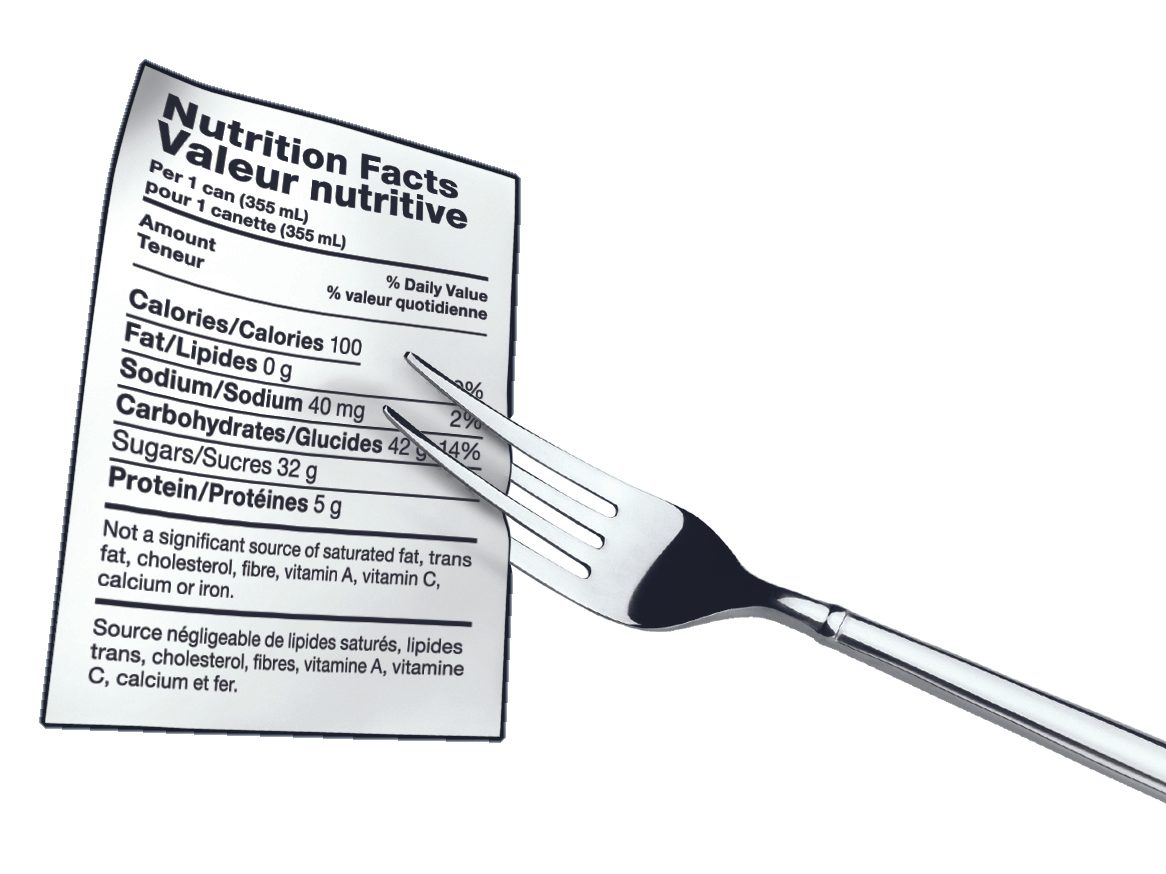
Calories
In Canada, calories and 13 core nutrients are always listed in the same descending order. The number of calories enumerated lets you know how much energy you will derive from one serving of this food. Keeping the 2,000-calorie-a-day guideline in mind, factor in how many servings of this particular food you should reasonably consume.
Don’t miss our ultimate guide to healthy grocery shopping.
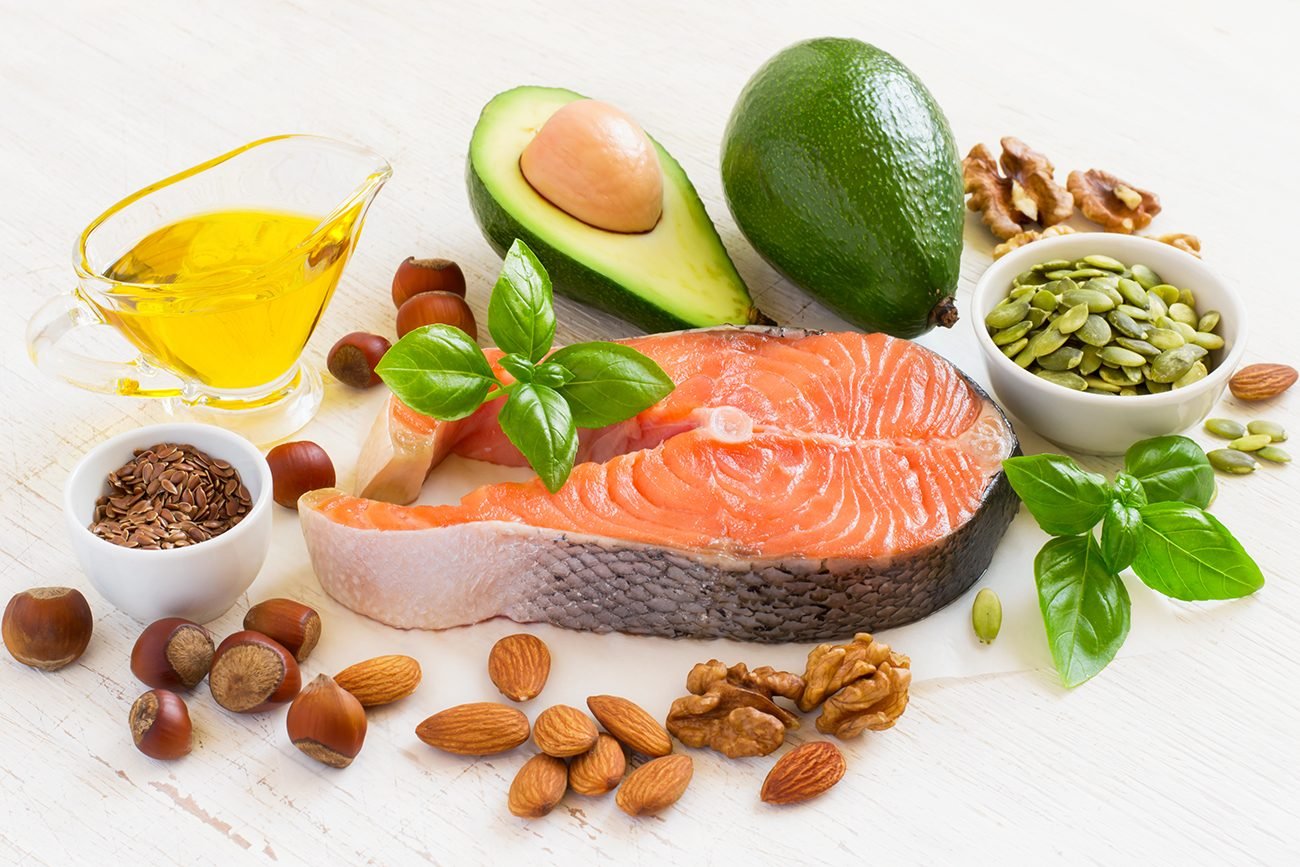
Fat (including Saturated and Trans)
When it comes to food, not all fats are created equal. For instance, omega-3 fats (polyunsaturated), like those found in fish, and monounsaturated fats, like those found in avocados, are considered healthy, with benefits for your heart. (This is the healthiest fish you can eat.) Aim to consume less saturated and trans fats—the top two types that can raise LDL, or “bad” blood cholesterol levels. Current guidelines recommend making sure that no more than 10 per cent of the fat you consume on a daily basis is saturated or trans (20 grams for a 2,000-calorie diet.) Keep total fat to less than 65 grams.
Check out more impressive health benefits of avocado.
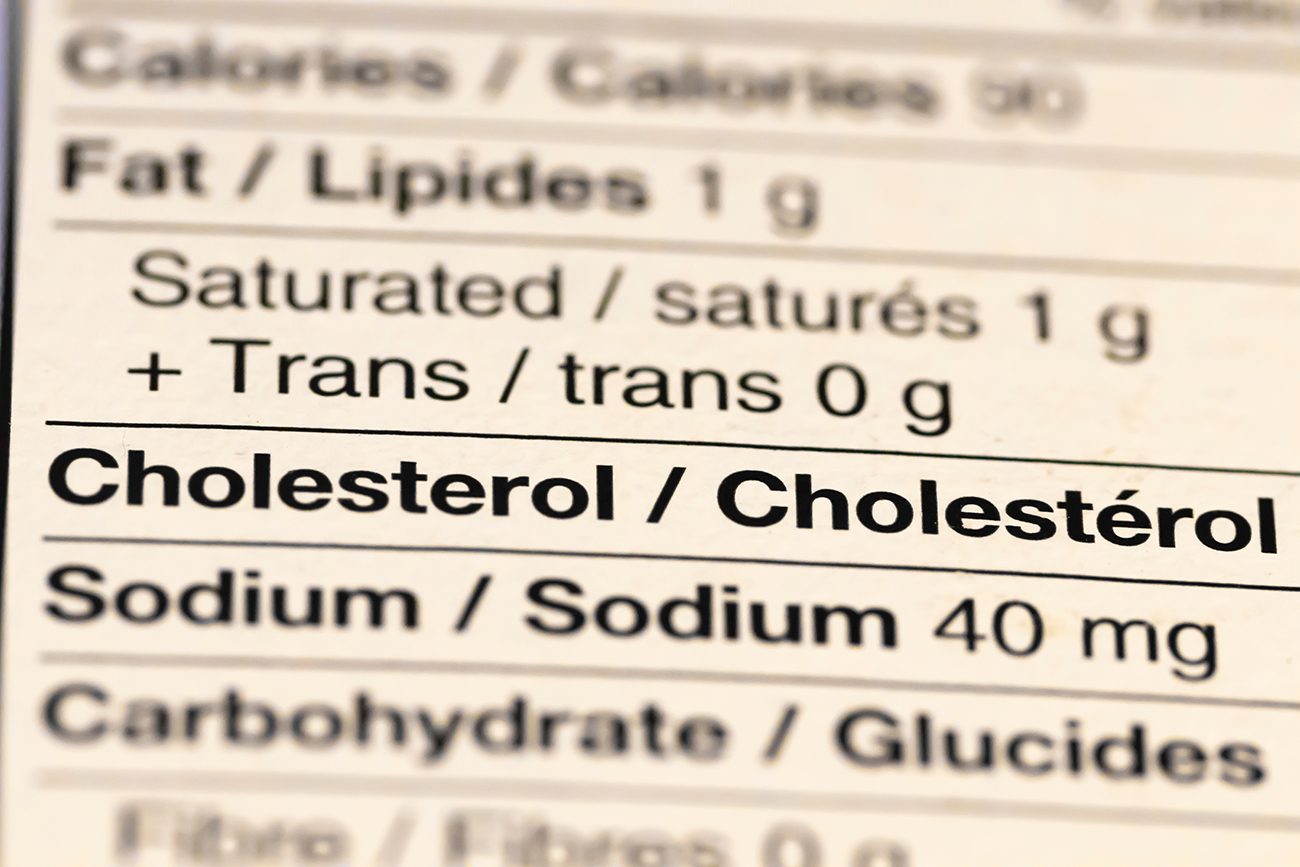
Cholesterol
While only some people (such as diabetics) need to worry in earnest about their dietary cholesterol intake, the best way to to control blood cholesterol is to choose foods that are lower in saturated and trans fats. The recommended daily intake of dietary cholesterol is no more than 300 milligrams a day, while the claim “cholesterol-free” indicates that the product has less than two milligrams of cholesterol in the amount specified and is also low in saturated and trans fats.
Find out the 10 worst foods for your cholesterol.

Sodium
Health Canada suggests keeping your daily sodium intake to less than 1,500 milligrams, or just over half a teaspoon, and not consuming more than 2,300 milligrams. For a food product to be considered “sodium-free,” it must contain less than five milligrams of sodium per serving. Stick to foods that have a maximum of 360 milligrams of sodium per serving.
Find out what happens to your body when you eat too much salt.
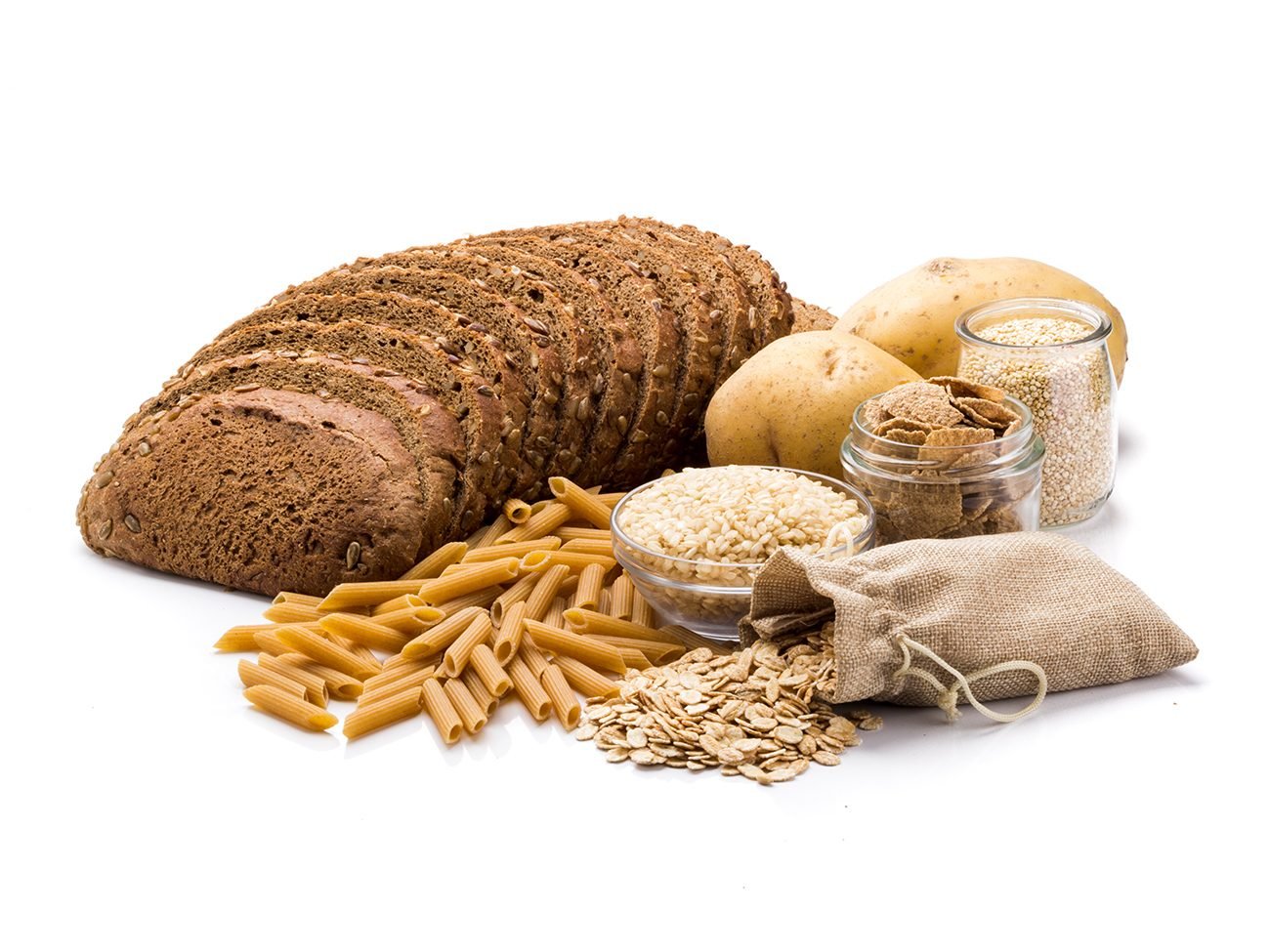
Carbohydrates
This number represents the sum of sugar, starch and fibre in a serving size. While sugar and fibre must be listed under carbohydrates, food manufacturers aren’t obligated to mention starch. Sugar and starch provide energy to fuel both brain and muscles, while fibre is considered a non-digestible carbohydrate that is important to your health. Keep daily carbohydrate levels at around 300 grams.
Curbing your carbohydrate intake? Don’t miss this roundup of 30 delicious low-carb meals.

Fibre
To meet government regulations in Canada, a “source of fibre” nutrition claim means that a specific amount of food contains at least two grams of fibre. A “high source of fibre” has, at minimum, four grams, and a “very high source of fibre” contains six grams minimum. Aim for 25 grams of fibre a day.
Want to truly feed your brain? Follow this physician-recommended MIND Diet meal plan.
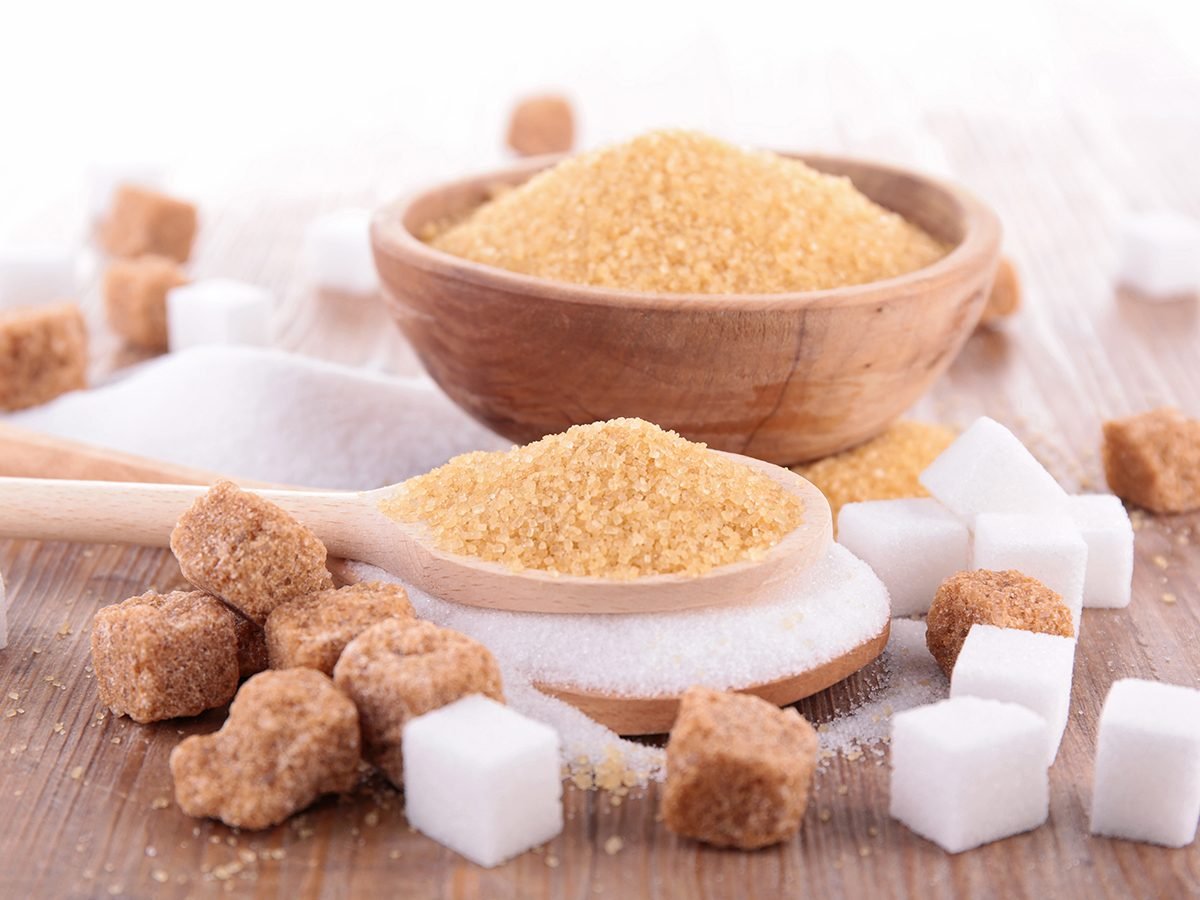
Sugars
The total grams of sugar listed on a label include both the refined variety, meaning sugar added in processing, and naturally occurring ones, such as fructose found in fruit or lactose in milk. When possible, choose food products with naturally occurring sugars over those with refined ones. Currently there is no daily recommended value for sugars, but Health Canada is proposing to establish one at 100 grams. Heart and Stroke, however, recommends Canadians get no more than 10 per cent of their daily calories from added sugars.
Find out 25 surprising ways sugar is making you sick.
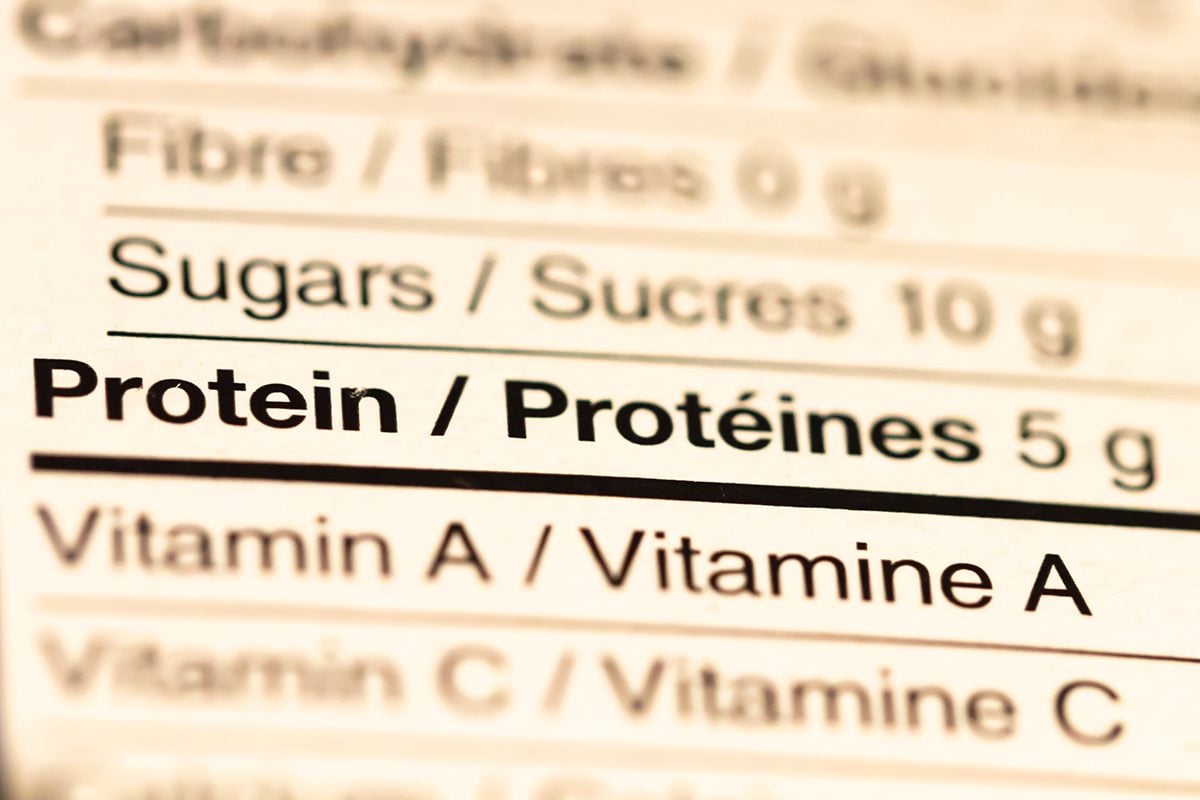
Protein
A source of the amino acids that help build and maintain a healthy body, protein also keeps you feeling full. On average, adults require 0.8 grams of protein for every kilogram of body weight, meaning a 68-kilogram adult needs about 55 grams of protein a day.
Now that you know how to read nutrition labels, check out the healthiest fruits you can eat.